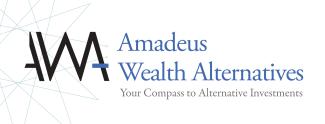Executive Summary
Persistent macroeconomic uncertainty, rising long-term yields, and declining confidence in the traditional 60/40 portfolio have driven high-net-worth investors to rethink how they allocate capital. Alternative investments—ranging from private equity and private credit to real assets, venture, and special situations—provide not only diversification and inflation protection but also the potential for outsized, uncorrelated returns.
This whitepaper examines how HNW investors can strategically integrate alternatives into their portfolios, the structural advantages they possess relative to institutions, and the governance and due diligence practices required to succeed in this evolving landscape.
Market Context: A Structural Disconnect
Even after the volatility of 2022, asset valuations remain historically elevated. As Jeremy Grantham has observed, equity valuations are among the highest 1% in history, while broader economic conditions sit near the lowest 1%. The Federal Reserve’s policy oscillations and secular inflation pressures have reduced the effectiveness of traditional diversification through bonds.
For long-term wealth holders, this environment underscores a critical truth: capital preservation and compounding now depend on accessing less efficient, private-market opportunities rather than relying solely on public market beta.
Strategic Rationale for Alternatives in HNW Portfolios
High-net-worth investors are uniquely positioned to benefit from alternatives because of their flexibility, time horizon, and direct access to institutional-quality deal flow. Family offices, trusts, and private investors can pursue strategies unavailable to most retail investors—illiquid, yield-generating, or privately negotiated opportunities that align with multigenerational goals.
Key Drivers:
- Inflation and Real Return Challenges: Real yields remain compressed, eroding purchasing power. Private real assets can serve as partial inflation hedges.
- Market Volatility and Correlation Risks: Equities and bonds increasingly move in tandem during stress events, undermining portfolio stability.
- Low Forward Return Expectations: Institutions forecast negative to low-single-digit nominal returns for the next decade in traditional 60/40 strategies.
The “new normal” for sophisticated investors involves intentional illiquidity—allocating to private markets that offer structural premiums, control, and differentiated cash flow characteristics.
Alternative Investment Segments for Consideration
Private Credit
Private lending has become a cornerstone of sophisticated portfolios. By financing lower-middle-market companies underserved by traditional banks, investors can achieve yields between 8–12%. Senior-secured, asset-backed, and mezzanine credit strategies allow varying risk-reward trade-offs. For income-oriented investors, direct participation through Business Development Companies (BDCs) and Small Business Investment Companies (SBICs) remains a compelling option.
Real Estate and Real Assets
Beyond traditional REIT exposure, HNWIs can engage directly in opportunistic or value-add real estate projects—such as multifamily housing, logistics, or medical facilities—often targeting IRRs in the high teens. Inflation-sensitive assets, including infrastructure, timberland, and farmland, further stabilize portfolio cash flows.
Private Equity and Secondary Markets
Secondary private equity funds offer discounted entry points and mitigated “J-curve” effects by buying seasoned fund interests. Co-investment opportunities let HNW investors deploy capital alongside institutional sponsors without management fees or carried interest, thereby enhancing net returns.
Venture and Growth Capital
For investors seeking asymmetric upside, direct venture co-investments and growth-stage opportunities—particularly in artificial intelligence, climate technology, and life sciences—provide exposure to innovation. While high risk, disciplined portfolio construction target IRRs exceeding 20%.
Special Situations and Niche Strategies
Energy funds, litigation finance, leasing strategies (such as aviation or equipment), and co-GP investments offer additional diversification. These strategies often exhibit low correlation with traditional equity markets and can fit into the “opportunistic” sleeve of an alternative portfolio.
Institutional-Grade Governance for Private Wealth
Effective alternative investing requires institutional rigor in selection, oversight, and structure.
Key elements include:
- Due Diligence: Evaluate manager track records, operational integrity, and risk controls.
- Transparency: Prefer independent valuation agents and third-party fund administration.
- Liquidity Management: Maintain capital planning models for calls and distributions.
- Tax Optimization: Structure investments using vehicles that mitigate UBTI exposure and optimize estate outcomes.
- Regulatory Awareness: Stay informed on SEC disclosure requirements, suitability thresholds, and cross-border investment rules.
Family offices increasingly mirror endowment-style governance frameworks, combining internal investment committees with external advisory input to manage these complexities.
Emerging Opportunities for Sophisticated Investors
- Blockchain and Digital Access: Tokenized versions of private equity and credit funds, allowing investors to hold interests on a blockchain rather than through paper‑based limited‑partnership agreements. These digital securities maintain the same underlying exposure but gain efficiency in issuance, transfer, and compliance reporting.
- Secondary Market Evolution: Growing private secondary platforms improve early exit options for illiquid holdings.
- Impact Integration: Sustainable agriculture, renewable energy, “clean diesel” and affordable housing funds allow investors to align values with returns, creating both financial and social legacies.
By integrating these frontier opportunities strategically, HNW investors can capture innovation-driven alpha while maintaining risk discipline.
Key Takeaways
- The 60/40 model is structurally challenged; diversification now requires private-market exposure.
- HNW investors enjoy access and flexibility advantages unavailable to retail portfolios.
- Alternatives such as private credit, real assets, and secondaries can enhance returns while stabilizing volatility.
- Institutional-grade governance and tax planning are essential to protect capital and optimize compounding.
- Emerging themes—AI, digital access, secondaries, and energy — will define the next decade of private wealth allocation.
Conclusion
For high-net-worth investors, alternative investing has moved from a niche allocation to a central pillar of strategic wealth management. Through thoughtful diversification, disciplined governance, and long-term vision, investors can achieve true resilience—preserving capital through economic transitions while expanding their financial and generational impact.
Amadeus Wealth Alternatives continues to champion a balanced and pragmatic approach to alternatives—combining stable income producing strategies with carefully curated growth opportunities—to help high-net-worth clients build enduring portfolios for a changing world.
Here is a sample strategic asset allocation model for a high-net-worth alternative investment portfolio. The pie chart illustrates diversification across key categories: Private Credit (20%), Private Equity – Primary and Secondary (20%), Real Estate (20%), Hedged Equity (20%) Venture Capital (10%), Special Situations (10%), This allocation reflects a balance between income generation, growth, liquidity management, and risk mitigation tailored for sophisticated investors:
Glossary of Terms
2&20: Private funds commonly charge a 2% management fee and take 20% of the profits, often called the “carried interest” or “carry”.
40 Act: Refers to the Securities Act of 1940. The term describes alternative investments registered with the SEC, which often offer quarterly liquidity through vehicles such as Interval Funds or Business Development Companies (BDCs). These investments can usually be held at brokerage firms.
Asset Class: A broad category of investments. Alternative asset classes include private debt, private equity, real estate (primary and secondary), promissory notes, equipment and aircraft leasing, direct and co-investments, venture investing, energy, options trading, multi-alternative strategies, GP (General Partner) interests, litigation finance, mineral royalties, and other special situations.
BDC: A Business Development Company is a fund that invests in small and medium-sized enterprises as well as distressed companies. BDCs support early-stage growth and assist troubled firms in regaining financial health. Structured similarly to closed-end funds, many BDCs are publicly traded, although some can be private and illiquid.
Capital Calls: Funds periodically request investors to contribute their committed capital over several years, ranging from a lump sum to installments over 4–5 years.
Co-investment: When a private equity fund offers investors the chance to invest alongside the fund in a company on a direct basis—not through the fund—often without the standard 2&20 fees.
Correlation: Measures how two securities or asset classes move in relation to each other. A correlation of +1 means they move identically; -1 means they move in opposite directions; 0 means no relationship. Portfolios with many low-correlation investments tend to be less volatile. Alternative investments often exhibit low correlation with the stock market.
Distribution to Paid-In Capital (DPI): A metric showing the return on investment for limited partners in a private equity fund, calculated by dividing total distributions to investors by total capital paid into the fund.
Illiquidity Premium: Extra returns investors require to compensate for the risk of holding assets that are difficult to sell for an extended period, making illiquid investments generally offer higher returns than liquid ones over comparable timeframes.
Interval Fund: A type of pooled investment vehicle similar to a mutual fund that repurchases shares from investors at specified intervals, allowing sales of typically illiquid investments, often quarterly.
J-Curve: Describes the typical return pattern of private equity investments, where early years show negative returns due to acquisition and improvement costs, followed by later years with profits, forming a “J” shape in performance charts.
Multiple On Invested Capital (MOIC): A return metric in private equity, calculated as total investment value (including unrealized gains) divided by the original invested amount, expressed as a multiple (e.g., 2x).
Opportunity Zone: A Qualified Opportunity Zone (QOZ)is an economically distressed community where private investments may gain capital gains tax incentives, including deferral benefits until 2026. Created under the 2017 Tax Cuts and Jobs Act signed by President Donald J. Trump, these zones aim to stimulate economic growth.
Options: Financial contracts that are either a CALL (right to buy a security at a specified price) or a PUT (right to sell). CALL options rise in value when the underlying stock price increases: PUT options rise when the stock price decreases, similar to short selling. Spreads combining options are used to hedge stock exposures.
Private Credit: Similar to private equity but focused on debt. Private debt funds lend to private companies.
Preferred Return: Often set at 8% (variable), this is the minimum return limited partners must receive before the general partner earns carried interest.
SBIC: A Small Business Investment Company is a privately owned fund licensed by the Small Business Administration (SBA). They benefit from low-interest SBA loans, potentially outperforming other funds.
Secondary Investments: The purchase of existing limited partnership interests from investors who originally bought them years prior. Secondary markets facilitate liquidity for typically illiquid fund commitments.
Standard Deviation: A volatility measure of portfolio returns, quantifying variation around the average return. Lower volatility increases the likelihood of higher long-term value for portfolios with similar average returns.
UBTI: Unrelated Business Taxable Income is income earned by tax-exempt entities like IRAs from activities outside their exempt purpose, making the income taxable. Investments through offshore vehicles offered by some private funds can shield IRAs from UBTI.
Waterfall: The distribution structure in private equity where the general partner (GP) receives carried interest after limited partners' capital and preferred returns are paid. The traditional model pays carry early; the “European style” requires full return of invested capital across all investments before carry is paid, delaying carry payments.
Warrants: Derivatives granting the right, but not obligation, to buy or sell a security (usually equity) at a set price before expiration. Often issued to debt funds alongside loans, enabling participation in a company's equity appreciation.
Edward Papier, CIMA
President, Amadeus Wealth Alternatives
212-697-3930
Investors should be aware that investments in Limited Partnerships involve a significant degree of risk and, therefore, should be undertaken only by investors capable of evaluating the risks of a Fund and bearing the risks they represent. In addition, there may be occasions when the Principals, General Partner, Advisor, Sub-Advisor and their respective affiliates may encounter actual and potential conflicts of interest with respect to a Fund. Prospective investors in a Fund should carefully read the Risks Section of a Fund’s Private Placement Memorandum and consider the information discussed therein which enumerates certain material risk factors and conflicts with respect to the Fund. If any of the events discussed in these sections occur, the Fund’s business, financial condition, results of operations and prospects could be materially adversely affected. In such cases, performance could decline, the Fund’s ability to achieve its investment objective could be negatively impacted and investors may lose all or part of their investment.

